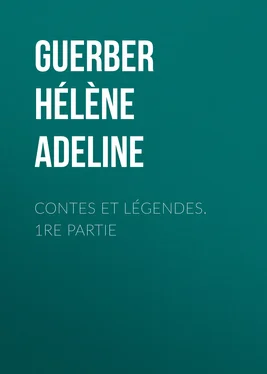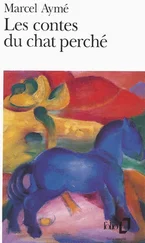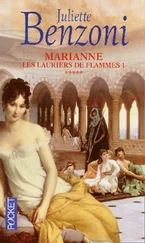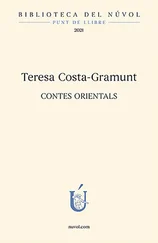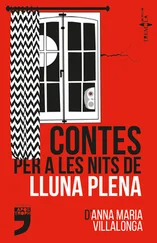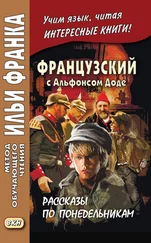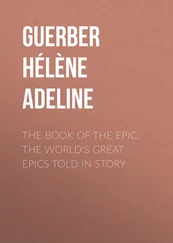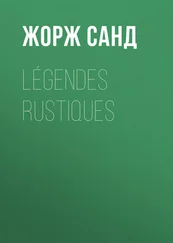Hélène Guerber - Contes et légendes. 1re Partie
Здесь есть возможность читать онлайн «Hélène Guerber - Contes et légendes. 1re Partie» — ознакомительный отрывок электронной книги совершенно бесплатно, а после прочтения отрывка купить полную версию. В некоторых случаях можно слушать аудио, скачать через торрент в формате fb2 и присутствует краткое содержание. Жанр: foreign_edu, Языкознание, Культурология, на английском языке. Описание произведения, (предисловие) а так же отзывы посетителей доступны на портале библиотеки ЛибКат.
- Название:Contes et légendes. 1re Partie
- Автор:
- Жанр:
- Год:неизвестен
- ISBN:нет данных
- Рейтинг книги:3 / 5. Голосов: 1
-
Избранное:Добавить в избранное
- Отзывы:
-
Ваша оценка:
- 60
- 1
- 2
- 3
- 4
- 5
Contes et légendes. 1re Partie: краткое содержание, описание и аннотация
Предлагаем к чтению аннотацию, описание, краткое содержание или предисловие (зависит от того, что написал сам автор книги «Contes et légendes. 1re Partie»). Если вы не нашли необходимую информацию о книге — напишите в комментариях, мы постараемся отыскать её.
Contes et légendes. 1re Partie — читать онлайн ознакомительный отрывок
Ниже представлен текст книги, разбитый по страницам. Система сохранения места последней прочитанной страницы, позволяет с удобством читать онлайн бесплатно книгу «Contes et légendes. 1re Partie», без необходимости каждый раз заново искать на чём Вы остановились. Поставьте закладку, и сможете в любой момент перейти на страницу, на которой закончили чтение.
Интервал:
Закладка:
H. A. Guerber
Contes et légendes. 1re Partie
PREFACE
This little collection of Legends and Fairy Tales is intended merely as an introduction to general French reading. The stories have been told as simply as possible, with infinite repetition of the same words and idioms to enable the pupil to obtain a good vocabulary almost unconsciously. They have also been narrated as graphically as practicable to arouse an interest in the plot, to stimulate curiosity, and thereby induce the pupil to read to the end.
With the exception of the first tale of the series, for which I have purposely selected the common nursery story, "The Three Bears," I have carefully avoided the tales which are most familiar, or have given them in some unusual version, so that only by knowing the meaning of the words the sense of the story can be obtained.
This method has been used with most gratifying results with pupils of all ages either with or without the accompaniment of a grammar, and it is very gradual, to facilitate rapid progress in the language.
Of course, the results to be achieved depend greatly upon the instructor, but I have found that where daily lessons were the rule, the pupils, at the end of a very short time, were able to read simple histories and novels at sight with much pleasure and profit.
My own method, which, however, varies greatly according to the age and the intelligence of the pupils, is, roughly outlined, as follows, taking the first paragraph of this work as an example:
The first sentence is read plainly by the teacher or written on the blackboard, and as these stories are intended to be used from the very first lesson, each word is translated into English. Then the pupils read the sentence in turn, supplying the translation of the words as they are rapidly pointed out. A few moments' work of this kind suffices with average pupils to enable them to memorize the words so that they can reproduce them verbally or in writing, when the book is shut or after they have been rubbed off the board.
The next sentence is treated in the same way, the pupils translating the words previously given and the instructor giving the meaning of the new words only . Then making use of the first idiomatic expression "il y avait," an explanation is given, showing how it can be changed into the interrogative form "y avait-il?" and the pupils are questioned rapidly as follows, using only the words already mastered:
"Y avait-il un ours?"
"Y avait-il deux ours?"
"Y avait-il trois ours?"
"Y avait-il un grand ours?"
"Y avait-il un petit ours?"
"Y avait-il un ours de grandeur moyenne?"
The answers are all given in French, as quickly as possible, ere the second sentence is written from memory.
Proceeding thus from sentence to sentence, more or less rapidly according to the class, a stock of words is soon acquired, reading, writing, and conversation become easy, and in a very short time the pupils, encouraged to guess at the meaning of new words , become entirely independent of vocabulary or dictionary. In concluding the lesson, the story is told again by the teacher, quite rapidly, in the usual conversational tone, or the pupils read or tell it aloud.
A vocabulary and a few notes have been added more as a matter of convenience for any pupils who should miss a recitation than for constant use, for the main object of this method is that the pupils should have all the French they have learned at the tip of their tongues. If this collection of stories helps to make the study of French more of a pleasure and less of a bugbear than it has heretofore proved, I shall feel that one part of my aim has been attained.
H. A. GUERBER.CONTES ET LÉGENDES
LES TROIS OURS. 1 1 The original of this story is the common English nursery tale, "The Three Bears and Little Silver Hair."
Il y avait une fois un, deux, trois ours: un grand ours, un ours de grandeur moyenne, et un petit ours.
Les trois ours demeuraient dans une petite maison, dans une grande forêt.
Dans la maison, il y avait trois lits: un grand lit pour le grand ours, un lit de grandeur moyenne pour l'ours de grandeur moyenne, et un petit lit pour le petit ours.
Il y avait aussi trois chaises: une grande chaise pour le grand ours, une chaise de grandeur moyenne pour l'ours de grandeur moyenne, et une petite chaise pour le petit ours.
Il y avait aussi trois assiettes et trois cuillères: une grande assiette et une grande cuillère pour le grand ours, une assiette de grandeur moyenne et une cuillère de grandeur moyenne pour l'ours de grandeur moyenne, et une petite assiette et une petite cuillère pour le petit ours.
Un jour le grand ours dit de sa grande voix: "J'ai faim."
"Oui," dit l'ours de grandeur moyenne de sa voix de grandeur moyenne, "J'ai faim."
Et le petit ours dit de sa petite voix: "Oui, oui, j'ai faim."
Les trois ours firent la soupe. Alors ils versèrent la soupe dans les trois assiettes. Ils versèrent une grande portion dans la grande assiette pour le grand ours. Ils versèrent une portion de grandeur moyenne dans l'assiette de grandeur moyenne pour l'ours de grandeur moyenne, et une petite portion dans la petite assiette pour le petit ours.
Alors le grand ours prit la grande cuillère, goûta la soupe et dit: "La soupe est trop chaude." L'ours de grandeur moyenne prit la cuillère de grandeur moyenne, goûta la soupe et dit: "Oui, la soupe est trop chaude," et le petit ours prit la petite cuillère, goûta la soupe et dit: "Oui, oui, la soupe est trop chaude."
Alors le grand ours dit: "Allons nous promener dans la forêt." "Oui," dit l'ours de grandeur moyenne, "allons nous promener dans la forêt;" et le petit ours dit: "Oui, oui, allons nous promener dans la forêt."
Les trois ours partirent. Ils laissèrent la porte de la maison ouverte, et la soupe sur la table. Une petite fille passa. Elle vit la petite maison, elle vit la porte ouverte, et elle vit la soupe sur la table. Elle dit: "J'ai faim," et elle entra dans la maison.
Elle prit la grande cuillère, goûta la soupe dans la grande assiette, et dit: "Cette soupe est trop chaude." Alors elle prit la cuillère de grandeur moyenne, goûta la soupe dans l'assiette de grandeur moyenne, et dit: "Cette soupe est trop froide." Alors elle prit la petite cuillère, goûta la soupe dans la petite assiette, et dit: "Cette soupe est excellente." La petite fille mangea toute la soupe.
Alors la petite fille dit: "Je suis fatiguée, où y a-t-il une chaise?" Elle vit les trois chaises. Elle alla à la grande chaise, s'assit, et dit: "Cette chaise n'est pas confortable." Elle alla à la chaise de grandeur moyenne, s'assit, et dit: "Cette chaise n'est pas confortable." Alors elle alla à la petite chaise, s'assit, et dit: "Cette chaise est très confortable." Alors la petite fille sauta de joie et la chaise se cassa!
La petite fille dit: "J'ai sommeil, où y a-t-il un lit?" Elle vit les trois lits. Elle alla au grand lit, se coucha, et dit: "Ce lit n'est pas confortable." Elle alla au lit de grandeur moyenne, se coucha, et dit: "Ce lit n'est pas confortable." Alors elle alla au petit lit, se coucha, et dit: "Ce lit est très confortable," et la petite fille s'endormit.
Quelques minutes après les trois ours arrivèrent. Le grand ours regarda sa grande cuillère et sa grande assiette, et dit de sa grande voix: "Quelqu'un est entré et a goûté ma soupe." L'ours de grandeur moyenne regarda sa cuillère de grandeur moyenne et son assiette de grandeur moyenne, et dit de sa voix de grandeur moyenne: "Oui, quelqu'un est entré et a goûté ma soupe," et le petit ours regarda sa petite cuillère et sa petite assiette, et dit de sa petite voix: "Oui, oui, quelqu'un est entré et a mangé toute ma soupe."
Читать дальшеИнтервал:
Закладка:
Похожие книги на «Contes et légendes. 1re Partie»
Представляем Вашему вниманию похожие книги на «Contes et légendes. 1re Partie» списком для выбора. Мы отобрали схожую по названию и смыслу литературу в надежде предоставить читателям больше вариантов отыскать новые, интересные, ещё непрочитанные произведения.
Обсуждение, отзывы о книге «Contes et légendes. 1re Partie» и просто собственные мнения читателей. Оставьте ваши комментарии, напишите, что Вы думаете о произведении, его смысле или главных героях. Укажите что конкретно понравилось, а что нет, и почему Вы так считаете.
